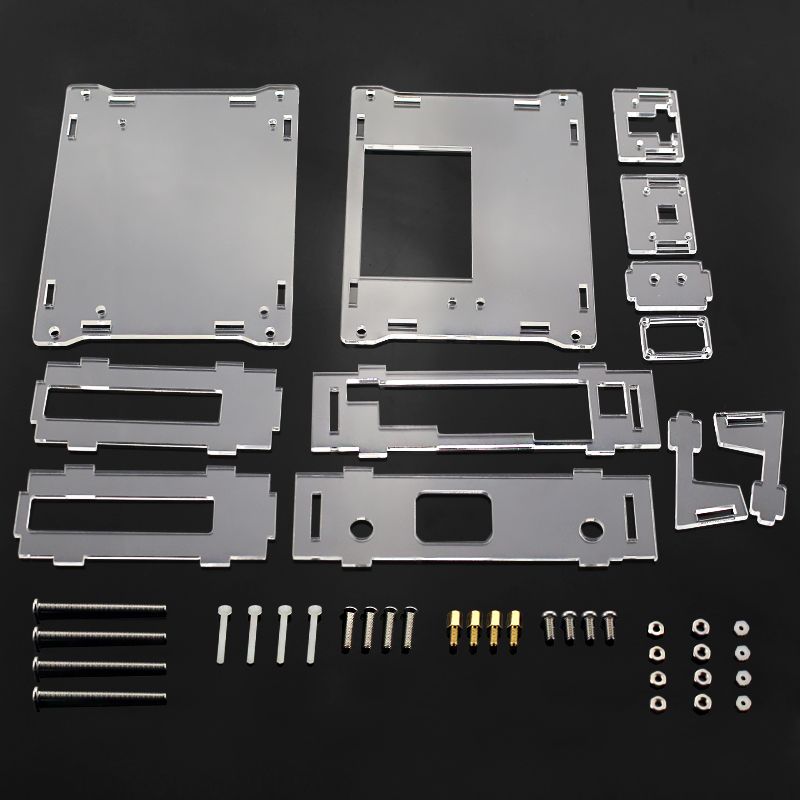Six Performance Characteristics of RenhotecIC Acrylic Protection Case


Six Performance Characteristics of RenhotecIC Acrylic Protection Case
Acrylic board has the advantages of light weight, cheap price and easy molding. Its molding methods include casting, injection molding, machining, thermoforming, etc. In particular, injection molding can be mass-produced, the process is simple, and the cost is low. Therefore, it is widely used in instrument parts, automotive lamps, optical lenses, transparent tubes, etc.
The six properties of acrylic sheets are as follows:
1, First of all, it has water-like transparency, the light transmittance exceeds 92%, the light is soft, the vision is clear, and the acrylic dye has good color effect.
2. Acrylic board has excellent weather resistance, high surface hardness and gloss, and good high temperature performance.
3. Acrylic sheet has good processing performance. It can be thermoformed or machined.
4. The light transmittance of the transparent acrylic plate is equivalent to that of glass, but the density is only half of that of glass. Plus, it's not as fragile as glass, and if broken, doesn't form sharp shards like glass.
5. The wear resistance of acrylic sheet is close to that of aluminum material, with good stability and resistance to various chemicals.
6, Acrylic sheet has good printing and spraying properties. The printing and spraying process of acrylic products can make it achieve the ideal surface decoration effect.
Types of plexiglass (acrylic) sheets and various types of acrylic sheet specifications. Public boards: transparent boards, dyed transparent boards, milk white boards, colored boards; special boards include: bathroom boards, cloud boards, mirror boards, splints, hollow boards, impact boards, flame-retardant boards, super wear-resistant boards, surface pattern boards, Abrasive plates, pearlescent plates, metal effect plates, etc. Different properties, different colors and visual effects to meet changing requirements.
Process characteristics
1. Polymethyl acrylic methyl ester contains polar side methyl groups, which has obvious hygroscopicity, and the water absorption rate is generally 0. The third drying condition is 8°C (TC-85°C), and the drying time is 4~5h.
2. Polymethyl acrylic methyl has obvious non-Newtonian flow characteristics in the temperature range of molding processing. Melt viscosity decreases with increasing shear rate, and melt viscosity is also sensitive to temperature changes. Therefore, for the molding process of polymethyl acrylic methyl, increasing the molding pressure and temperature can reduce the melt viscosity and obtain better fluidity.
3. The temperature at which polymethyl acrylic methyl begins to flow is about 160 degrees Celsius, and the temperature at which polymethyl acrylic methyl begins to decompose is higher than 270 degrees Celsius, and the processing temperature range is wide.
4. Polymethyl acrylic methyl has high melt viscosity, fast cooling speed, and easy to generate internal stress. The process conditions need to be strictly controlled during molding, and the product needs to be processed after molding.
5. Polymethyl acrylic methyl ester is an amorphous polymer, and its shrinkage rate and variation range are small, generally within the range of 0. 05-08, it is beneficial to improve the dimensional accuracy of plastic parts.
6. Polymethyl acrylic methyl has excellent cutting performance, and its profiles can be easily processed into various required sizes.
Processing technology
Polymethyl acrylic methyl (PMMA) can be produced by processes such as casting, injection, extrusion and thermoforming.
1. Casting
Casting molding is used to form PMMA plates, bars and other profiled materials, that is, the bulk polymerization method is used to form profiles. After casting, the post-treatment conditions for the product are as follows: 2 hours at 60°C, 2 hours at 12°C (2 hours at TC).
2. Extrusion
Polymethyl acrylic methyl (PMMA) can also be extruded by suspension polymerization to produce PMMA sheets, rods, rods, plates, etc., but the profiles prepared by this method, especially plates, have low mechanical properties due to the small molecular weight of the polymer. Well, the production efficiency is high, especially for pipes and so on. The chemical corrosion resistance, heat resistance and solvent resistance of the section steel are lower than those of the cast section steel. The casting method is used for molding. Shapes that are difficult to manufacture. Extrusion can use single-stage or double-stage exhaust extruder, and the screw length-to-diameter ratio is generally between 20-25. Table 2 is a typical extrusion process.
3. Thermoforming
Thermoforming is the process of forming plexiglass sheets or sheets into products of various sizes and shapes. Cut the desired size blank onto the mold frame, heat to soften it, and press close to the mold surface. The shape is the same as the shape, and the product is finished by cooling and trimming the edges. Punches with shaped surfaces are pressurized by vacuum drawing or direct pressure. The thermoforming temperature can refer to the suggested temperature range in Table 3. When using rapid vacuum low-draw forming products, the temperature close to the lower limit should be used, and the temperature close to the upper limit should be used for deep-drawn products with complex shapes, generally at room temperature.
Acrylic Features
1. Hardness:
Hardness is one of the important parameters reflecting the production process and technology of acrylic sheets, and is an important part of quality control. The acrylic lampshade can better reflect the purity of the raw material PMMA, the weather resistance and high temperature resistance of the plate. Hardness directly affects whether the board will shrink and bend, and whether the surface will crack. Hardness is one of the indicators to measure the quality and hardness of acrylic sheet.
2. Thickness tolerance:
The control of plate thickness tolerance is an important embodiment of quality management and production technology. Acrylic production has international standards
3. Transparency/whiteness:
Strict raw material selection, advanced formula tracking, and modern production technology ensure the excellent transparency and whiteness of the board. Flame polished bright and transparent.







Leave a Comment